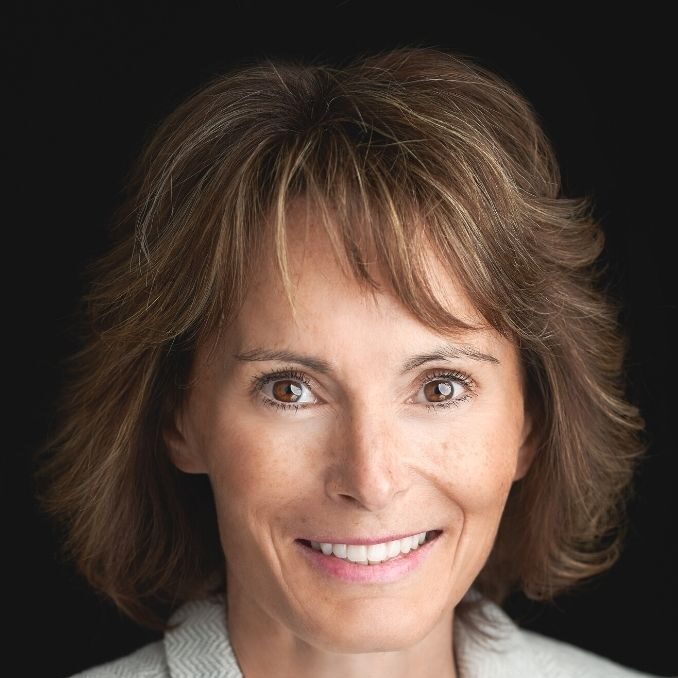2024…
How Tanja Perry is establishing trust between Indigenous communities and Scotiabank.
The District Vice President for Alberta/Northwest Territories shares her story — and her advice.

By Shelley White
Tanja Perry’s passion for allyship with Indigenous peoples has always come naturally. It stems from her upbringing, her friends and family, her environment, and her job.
“I grew up in a very small town in British Columbia and went to school with many Indigenous kids my age. They were my friends, my neighbours, and I’ve always had very strong relationships with their families,” says Tanja, who is District Vice President for Alberta/Northwest Territories at Scotiabank. Tanja also met her Indigenous husband living in the north. “My children embrace their Indigenous heritage and it is my role as a parent to ensure it is valued and honored. And living in remote communities has always been in my wheelhouse. I love the remoteness, and all that it has to offer.”
Tanja moved to the Northwest Territories at a very young age to work as an apprentice mechanic. But her chosen career would take a turn when she was approached by a recruiter from a local bank.
“They said I had the personality to talk to people, so why am I not in banking?” recalls Tanja. “Once I stepped into my role as a banker, I saw very quickly that there were a lot of challenges with credit and accessibility to banking in the Indigenous communities around me. And my passion and advocacy started there.”
Now, with 30 years of experience in the banking industry, Tanja is a driving force for allyship and positive change in both her role as District VP and as Co-chair for the National and Prairie Region Indigenous Employee Resource Groups (ERGs). Based in Fort McMurray, Alberta, Tanja has made it her mission to build trust and forge relationships between the bank and the Indigenous communities in her district and across Canada. She’s particularly passionate about improving relationships with those that are challenged geographically and lack access to banking services.
“These are relationships that we need to repair as bankers, not the other way around.”
“These are relationships that we need to repair as bankers, not the other way around,” Tanja notes. “And I continue to try and show others what I do, how I work within Indigenous communities, and the relationships that I have been able to build.”
Another passion of Tanja’s is financial literacy, or, as she prefers to call it, “financial fitness.” Over the past year, in cooperation with the Aboriginal Financial Officers Association, she helped to develop customized Financial Fitness modules specifically tailored to Indigenous community needs. The four modules — targeting Grades 3/4, Youth, Adults and Older Adults/Elders — will soon be making their way into Indigenous communities across Canada via trained facilitators.
“We’ve selected 12 Scotiabank employees from across Canada to act as facilitators due to their outstanding work within their Indigenous communities,” she says. “They have all completed their facilitation training and as of September, they will be supporting our branches going forward to offer these great programs. So, I’m really proud of that,” she says.
Tanja points out that the modules aren’t meant to be one-size-fits-all. They have been developed so that they can be adjusted based on an individual community’s needs. “We can really come in with something to offer that’s meaningful, to help individuals plan for their future. It will also allow us to be in our communities to listen, learn, and be partners.” she says.
Another important aspect of Tanja’s advocacy and community-building work has been through her work with the Scotiabank Indigenous ERGs, which are composed of both Indigenous employees and allies. “Employee Resource Groups are a fantastic way to grow opportunities for leadership, networking, and professional development,” she notes.
The groups’ mandates include striving to recruit and retain Indigenous employees, strengthening partnerships with Indigenous-focused organizations, establishing and maintaining an inclusive banking experience for Indigenous customers, and acting as a key influencer to foster, support, and raise awareness of the bank’s National Indigenous People Inclusion strategy.
“The collaboration, vision, and work that the Indigenous ERG team is doing is truly inspiring, and I am honored to be a part of it.”
One important project Tanja helped to create is the Indigenous Cultural Competency program, a mandatory learning course for all Canadian-based employees to further enhance their learning and allyship, she says. The Indigenous ERGs have also been increasingly exploring opportunities for collaboration with other ERGs at the bank, to great success. “The collaboration, vision, and work that the Indigenous ERG team is doing is truly inspiring, and I am honored to be a part of it,” she says.
Tanja notes that September 30, which will be the first National Day of Truth and Reconciliation in Canada, marks a critical step to honour survivors of residential schools, their families, and communities. “It is a time to learn and reflect on how we can do our part to eliminate racism and other forms of discrimination,” she says. “We must stand together to learn this history and take action to ensure it is not repeated — it is the only way forward.”
There is still much work to be done to repair and build relationships with Indigenous peoples, adds Tanja, and all Canadians can do their part to help support the healing process. “We must recognize the unique history, culture, and traditions of each community as a fundamental first step. Educate ourselves, be knowledgeable, empathetic, and respectful of Indigenous peoples,” she says. “The culture is beautiful, steeped with values, spirituality, and connections to the land. It is important we all develop a greater understanding, know what is important to them and what they will fight to protect.”
Tanja says she treasures her own connection to the natural environment. When she’s not at work in Fort McMurray or travelling through Northern communities, she and her family spend time in the wilds of British Columbia. “We have a 600-acre ranch where we enjoy our horses, developing our land, kayaking, quadding and taking in the breathtaking surroundings. It’s my happy place.”
In her role as a business leader, Tanja hopes to send a message to others in positions of power about the importance of an inclusive and diverse workplace, offering this advice to managers and executives looking to become diversity champions: “Lead by example by fostering transparency and two-way communication in which every opinion is valued. Embrace the uniqueness people bring to the table and ask yourself what perspectives and voices have not yet been heard,” she says. “Be a leader who creates an environment where individuals feel they can be their true authentic selves.”
2024…
Gallery: 2024 RBC Canadian Women Entrepreneur Awards Program
Eva…
Meet Eva Hartling, Founder of The Brand is Female: Empowering Women and Celebrated for Her Impact on Women in Leadership
TORONTO,…
Twenty-One Remarkable Women Entrepreneurs Named 2024 RBC Canadian Women Entrepreneur Awards Finalists
By…
Sponsorship, Strategy, and Success: How this Scotiabank Executive Champions Career Advancement Through Advocacy
By…

